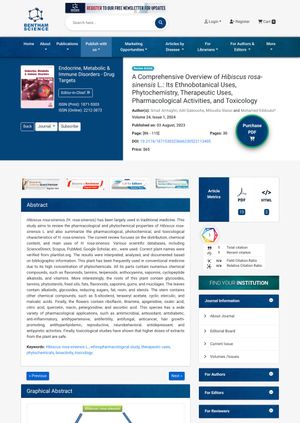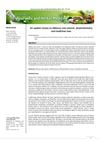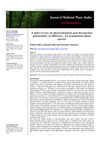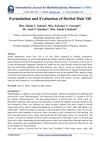A Comprehensive Overview of Hibiscus Rosa-Sinensis L.: Ethnobotanical Uses, Phytochemistry, Therapeutic Uses, Pharmacological Activities, and Toxicology
May 2023
in “
Endocrine, metabolic & immune disorders
”

TLDR Hibiscus rosa-sinensis is used in traditional medicine and is safe in high doses, with various health benefits.
The document is a comprehensive review of the Hibiscus rosa-sinensis L. plant, which is widely used in traditional medicine. The plant contains various chemical compounds such as flavonoids, tannins, terpenoids, anthocyanins, saponins, cyclopeptide alkaloids, and vitamins, found in all its parts. These compounds contribute to its numerous pharmacological applications, including antimicrobial, antioxidant, antidiabetic, anti-inflammatory, antihypertensive, antifertility, antifungal, anticancer, hair growth-promoting, antihyperlipidemic, reproductive, neurobehavioral, antidepressant, and antipyretic activities. Toxicological studies have confirmed that higher doses of extracts from the plant are safe.




